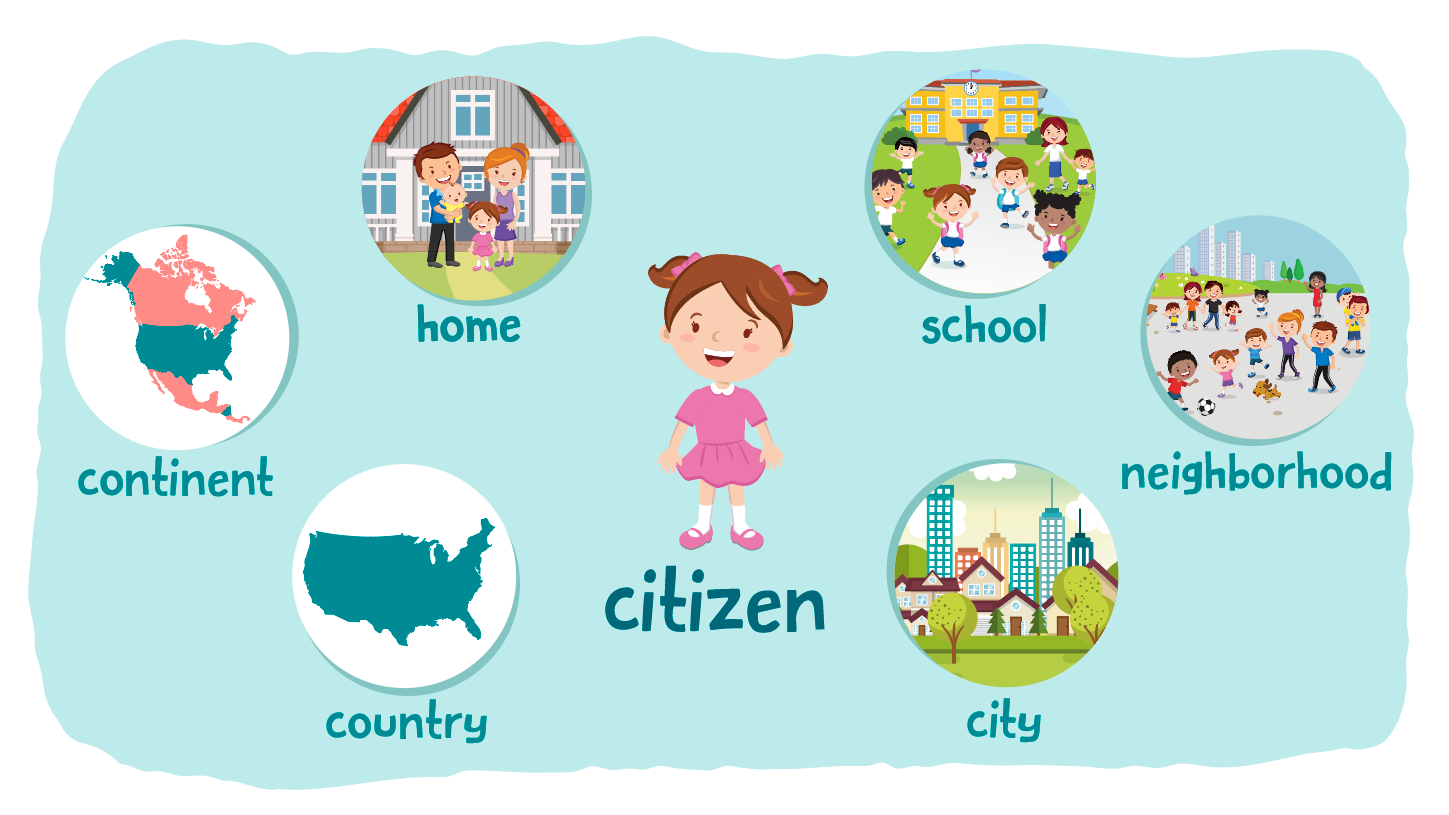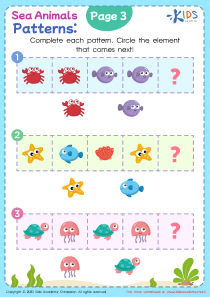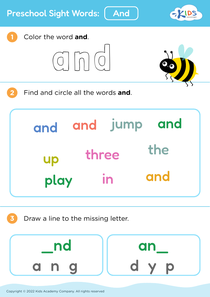PK.G.2 Identify and describe shapes worksheets With Answers for Preschool
5 filtered results
-
From - To
Explore our engaging "PK.G.2 Identify and Describe Shapes Worksheets" designed specifically for preschoolers! These interactive worksheets help young learners recognize and describe various shapes through fun activities. Each worksheet is crafted to enhance children's shape identification skills, promoting essential geometric understanding in an enjoyable way. With answers provided, parents and educators can easily track progress and provide guidance. Ideal for home schooling or classroom use, these resources ensure children develop a solid foundation in geometry as they prepare for future math concepts. Foster your child's love for shapes while making learning playful and effective!
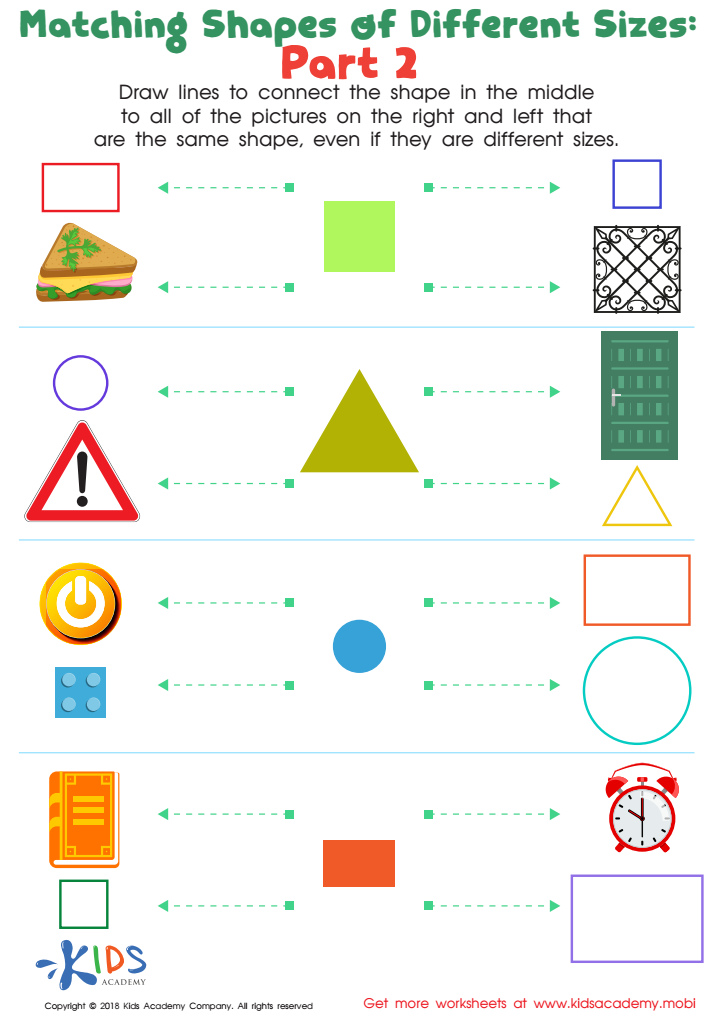

Geometry: Part 2 Worksheet
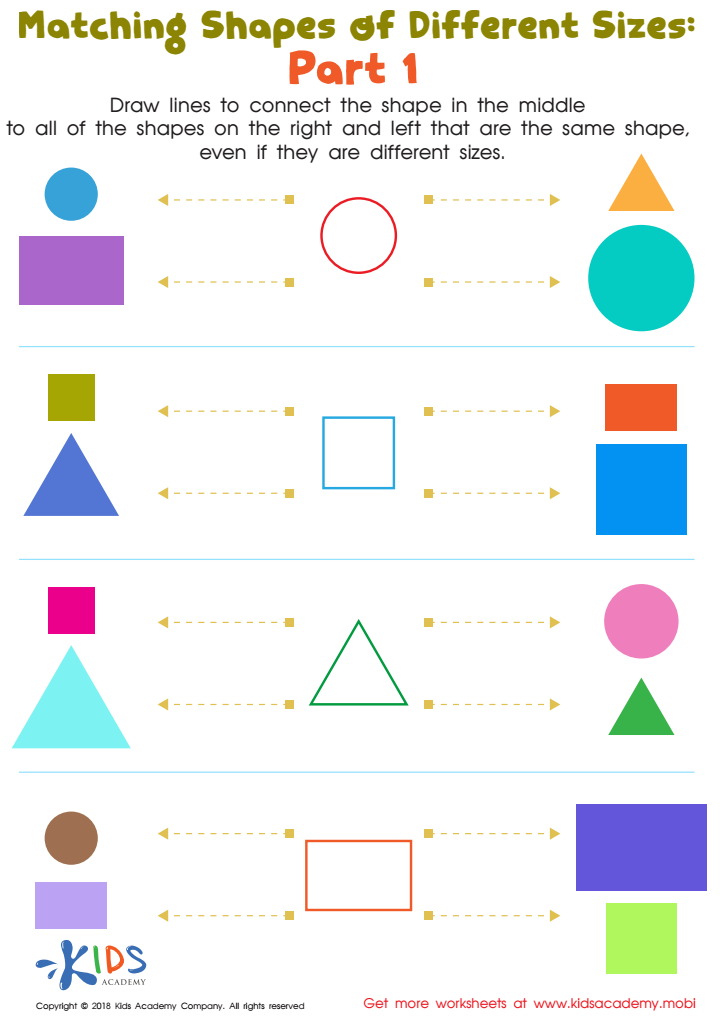

Geometry: part 1 Worksheet
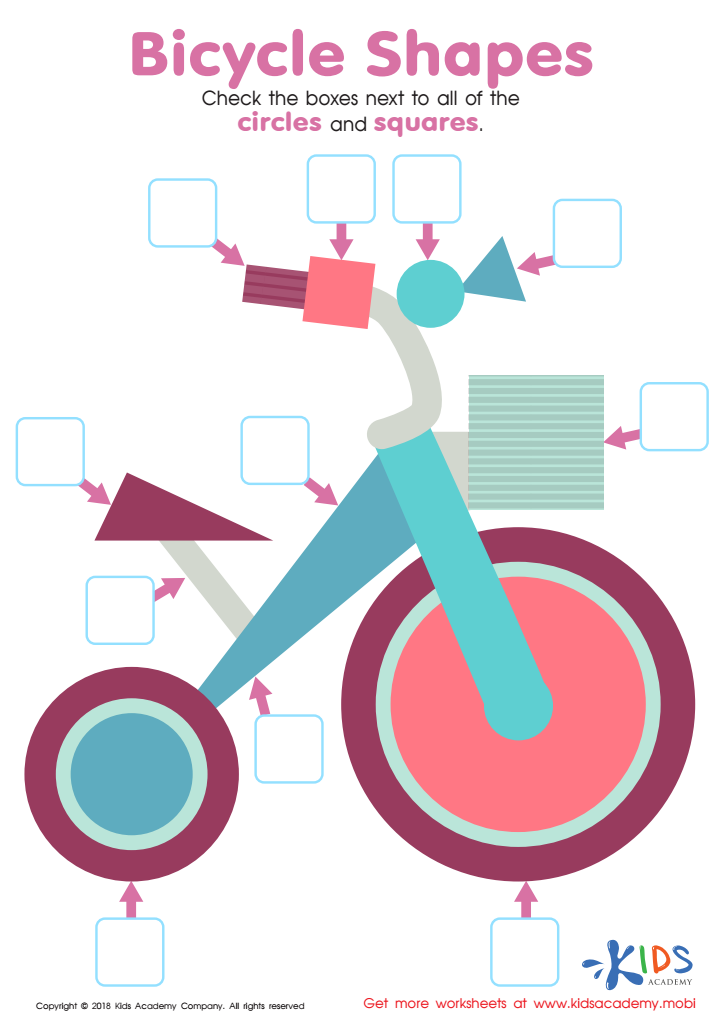

Bicycle Shapes Worksheet
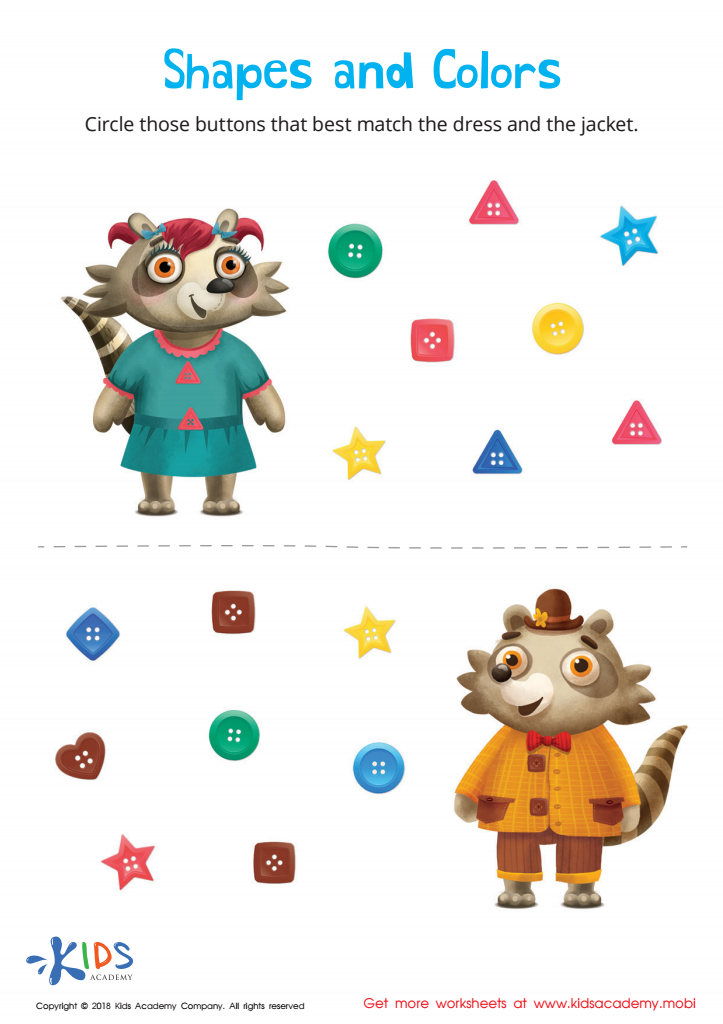

Shapes and Colors Worksheet
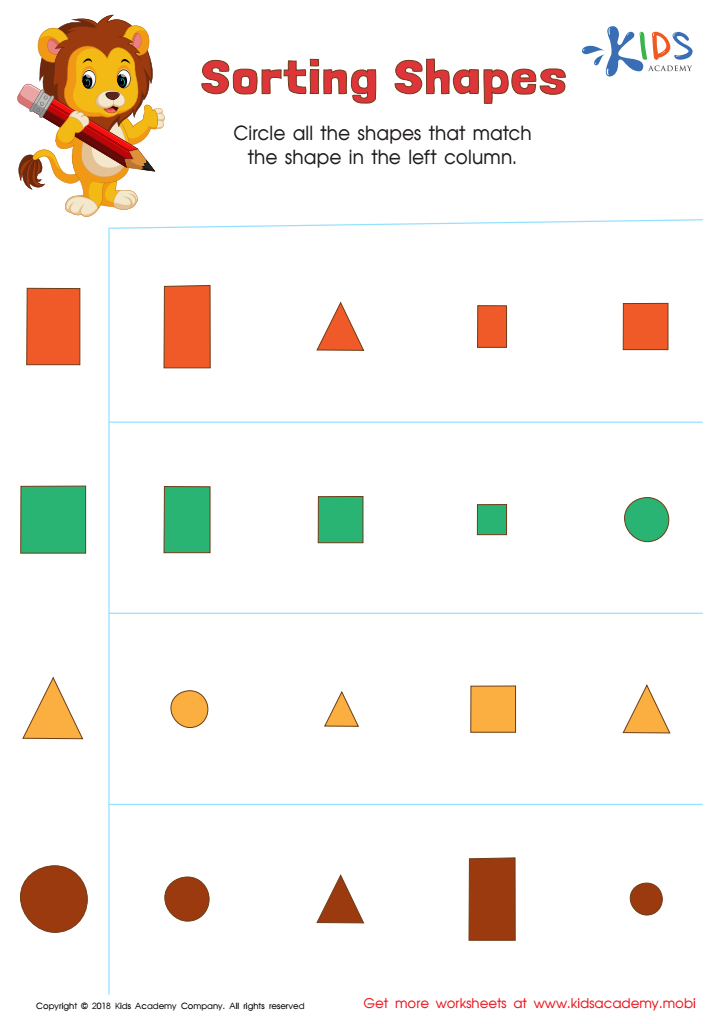

Sorting Shapes - Part 2 Worksheet
PK.G.2, which focuses on identifying and describing shapes, is crucial in preschool education as it lays the foundation for future math and spatial reasoning skills. Teaching children to recognize and describe shapes—such as circles, squares, triangles, and rectangles—enhances their ability to categorize and interpret the world around them.
Understanding shapes is not just about geometry; it aids in developing critical thinking skills as children learn to compare, sort, and contrast different objects. For example, recognizing that a round object can be classified as a circle helps children make connections between different visual experiences.
Moreover, shape identification helps enhance vocabulary. As children describe shapes, they learn new words and concepts, expanding their communication skills. This vocabulary growth is beneficial not just academically but socially as children learn to articulate their thoughts clearly.
Additionally, activities involving shapes promote fine motor skills. Tasks like cutting out shapes or building with blocks require hand-eye coordination and muscle control, which are essential for writing and other tasks later in their education. By integrating shape recognition into daily activities, parents and teachers foster a rich learning environment that supports early development in diverse areas.
 Assign to My Students
Assign to My Students






.jpg)
.jpg)
